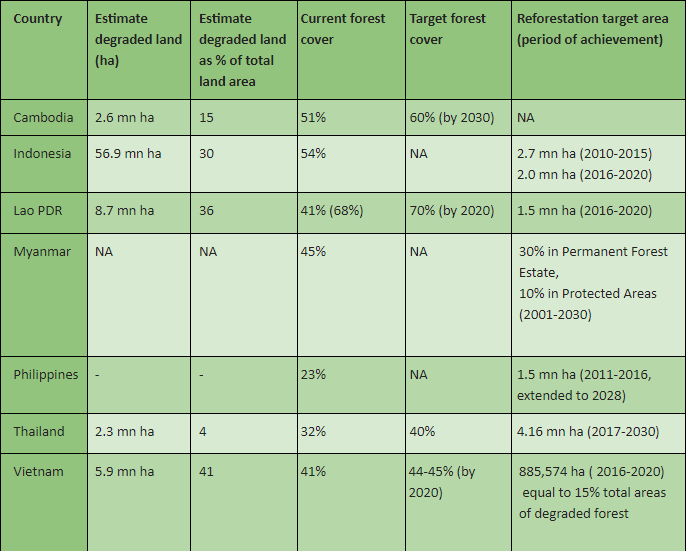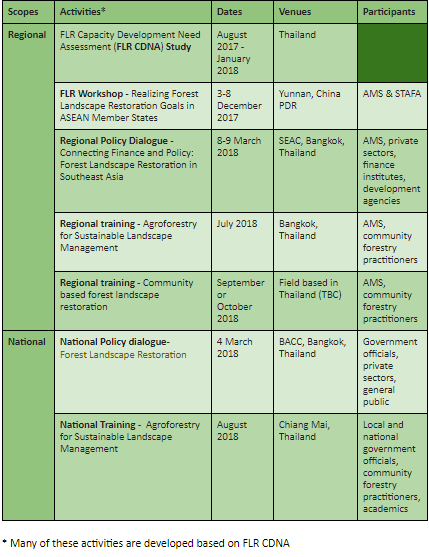RECOFTC Announces New Forest Landscape Restoration (FLR) Initiatives

Globally, 12 million hectares of land are being degraded every year, while an additional 7.6 million hectares of forests are converted to other uses. This is often a by-product of weak and unclear rights. The results of this deforestation and degradation are far reaching: it threatens the livelihoods of the millions of forest dependent peoples, undermines government development initiatives, and threatens long-term private sector investments. In turn, these consequences can slowly erode the economic, political, and social foundations of our society.

Sources: FAO and RECOFTC (2016), RECOFTC and AWG-SF (2017)

One such approach is Forest Landscape Restoration (FLR), which is a long-term process of regaining ecological functionality and enhancing human well-being across deforested or degraded forest landscapes. FLR is more than just planting trees - it is restoring the whole landscape to meet present and future needs and to offer multiple benefits and land uses over time.

The FLR approach is centered on effective stakeholder participation, negotiating landscape level trade-offs and consensus building. Forest restoration programmes that adhere to these principles are more likely to attract investment and to be successful in the long-term than those that do not. RECOFTC, with its vision to empower local people recognises the value of FLR with its appropriate consideration of rights and well being of local communities, while at the same time balancing these with ecological functionality.
RECOFTC is working to develop the capacity of key stakeholders on forest landscape restoration through the following initiatives
RECOFTC Forest Landscape Restoration Initiatives:


